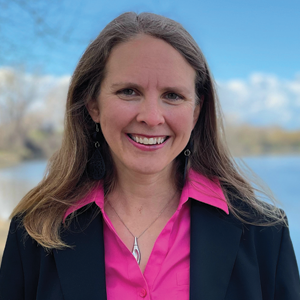Laurel Larsen
595 McCone Hall

Laurel Larsen is an Associate Professor of Civil and Environmental Engineering and is in charge of the Environmental Systems Dynamics Laboratory at UC Berkeley. Larsen’s research focuses on using a variety of tools to identify the feedback processes driving environmental systems at the landscape scale. These tools include field and laboratory work, simulation modeling, and data-driven analysis using increasingly available environmental data from sensor networks and remote sensing platforms. Much of Larsen’s work focuses on how water interacts with physical (e.g., sediment) and biological (e.g., plants) components of the environment, often in nonlinear ways that lead to thresholds, sudden shifts between alternate stable states, or chaotic behavior. Understanding these types of interactions enables anticipatory planning and improves the efficiency and effectiveness of restoration efforts. Her work has influenced restoration efforts in the Everglades, with ongoing work focusing on the Chesapeake Bay and the Wax Lake Delta, part of the greater Mississippi River delta complex.
Ph.D., Civil, Environmental, and Architectural Engineering, University of Colorado, 2008
Larsen’s research focuses on how flowing water structures the form and function of landscapes, with emphasis on the Florida Everglades, wet meadows across the US, and intermittent streams in coastal California. Her work with the Environmental Systems Dynamics Laboratory takes a complex-systems approach to environmental problems, seeking to understand the set of interactions and feedback that produce emergent phenomena. The lab’s approach to problems integrates field work and numerical modeling to identify the most critical drivers of landscape-scale change and generate predictions about how landscapes will respond to climate change or changes in management. Larsen’s research uses a variety of tools and creativity in the design of new experiments and methods. A common approach is to study small-scale processes in the field and laboratory and then extrapolate that information to larger spatial scales and longer timescales using numerical simulations.
Larsen has used that approach in the Everglades to study the formation and degradation of a strikingly patterned landscape that is of prime interest in restoration activities. There, she performed experiments in field and laboratory flumes to understand how organic sediment moved through canopies of marsh vegetation, monitor surface water and groundwater biogeochemistry to understand how evapotranspiration affected nutrient availability and plant growth, and develop new optical techniques for fingerprinting organic particles. The findings of this field and laboratory research led to the development of a simulation model that Larsen used to test different hypotheses of landscape evolution.
News
No mentions in News
Spotlights
No mentions in Spotlights
Student Updates
No mentions in Student Updates


